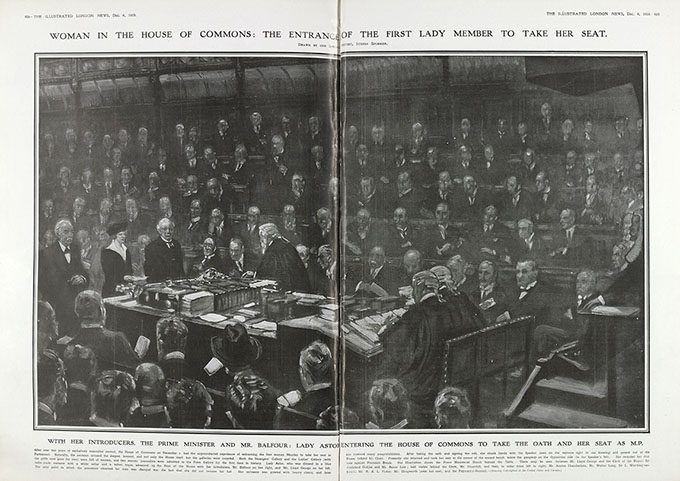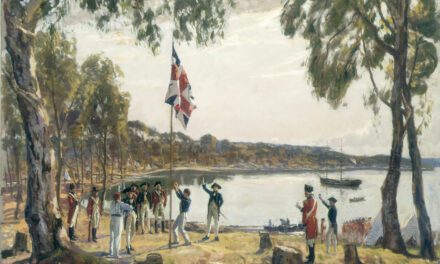Reading time: 8 minutes
This blog post marks the anniversary of the Parliament (Qualification of Women) Act, which passed on 21 November 1918, and enabled women over the age 21 to stand for Parliament in the UK.
While an often overlooked act, this change in the law represents an important milestone for women’s rights. For the first time in history, women were able to directly influence Parliamentary debates and the passing of laws.
Drawing on records from the Office of Works and the press, this blog post looks at how women’s admission to the House of Commons impacted the masculine structure of Parliament and traces the experiences of the pioneering women elected as MPs after the act was passed.
Debating the act
When women over 30 who met a property qualification won the right to vote in February 1918, there was confusion as to whether women could now be MPs. As a result, the Liberal MP Herbert Samuel introduced a resolution on 23 October 1918 which would allow women to stand for Parliament.
Samuel argued that it was ‘the natural consequence’ now that some women could vote, and emphasised that the ‘woman’s point of view’ should be heard in Parliament by women, rather by men claiming to represent women’s views. It was also believed that women had a ‘special knowledge’ of issues related to the home and social reform which would benefit Parliament, particularly in the aftermath of the First World War.
Some politicians remained hostile to the idea of women MPs. The Conservative MP Hedworth Meux declared ‘I say that no woman is fit by her physical organisation to stand the strain of Parliament’. However, the response to the bill was largely positive and it passed with little opposition.
While the act was just 27 words long, its impact was huge – for the first time in history, women’s voices could be directly heard in the House of Commons. The act read ‘A woman shall not be disqualified by sex or marriage for being elected to or sitting or voting as a Member of the Commons House of Parliament’.
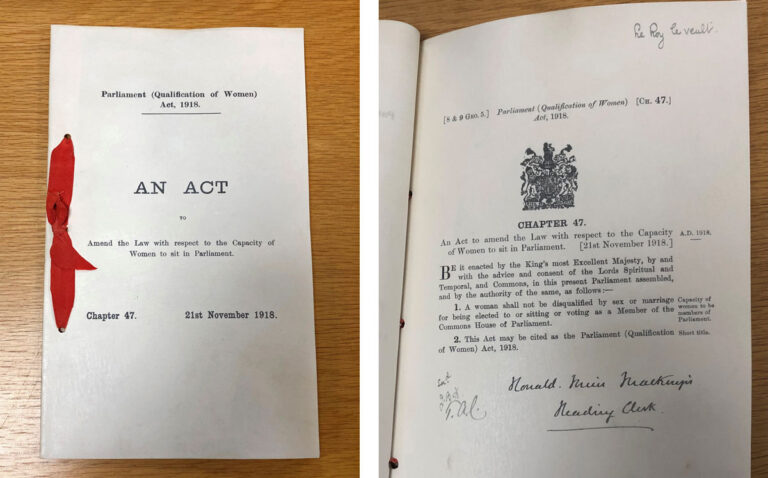
Interestingly, there was no age restriction for women standing for Parliament. From the age of 21 women could fight seats on the same terms as men, even though women aged under thirty remained disenfranchised under the terms of the 1918 Representation of the People Act. This resulted in numerous women standing for election before they could vote themselves over the subsequent decade.
Facilities for women in Parliament
This change in the law was swiftly followed by debates about the need for female facilities in Parliament, as the structures and surroundings of Westminster ‘were largely man-made’, and at the time, did not adequately cater for women.
Discussing women’s admission to the House of Commons in 1918, a memorandum produced by the Office of Works stated that:
‘In connection with the Motion which has been passed that women should be eligible as Members of Parliament, it is necessary to make certain arrangements, which are rather difficult at the present time owing to the fact that the numbers of women who are likely to be returned to the House are not known.’Memorandum titled Houses of Parliament. Admission of Women to the Legislature, 1 Nov 1918, WORK 11/237
Various proposals were submitted concerning provisions for female bathrooms and a woman members’ room. The idea of a woman only dining room was also discussed, although it was suggested that ‘perhaps in many cases the women members would use the same Dining Room as the existing members of the House’, although this did not materialise.
It was proposed that a woman’s bathroom could be provided where the blue coloured room is on this diagram, as ‘all that would be necessary would be the taking out of the urinals in the lavatory and making provisions on further W.C.’.
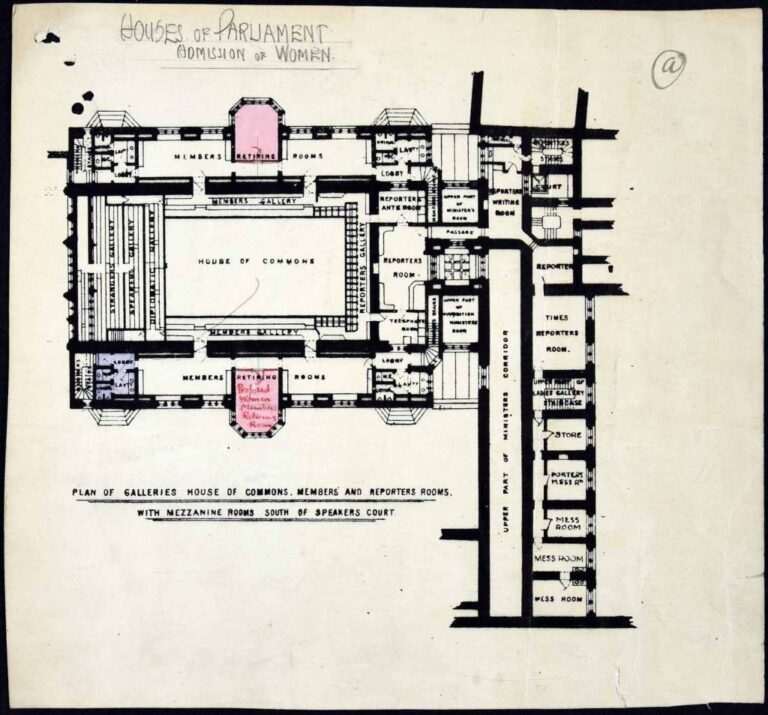
Catalogue ref: WORK 11/237
Furthermore, a woman member’s room was suggested and is coloured in pink at the bottom of the diagram, its name highlighting the perceived strangeness of MPs who were not male. This space provided a place for women MPs to work in between Parliamentary debates.
As more women entered the House of Commons during the interwar period, female MPs across the political spectrum shared the woman members’ room. The room became known as the ‘tomb’ as it was cramped and poorly furnished.
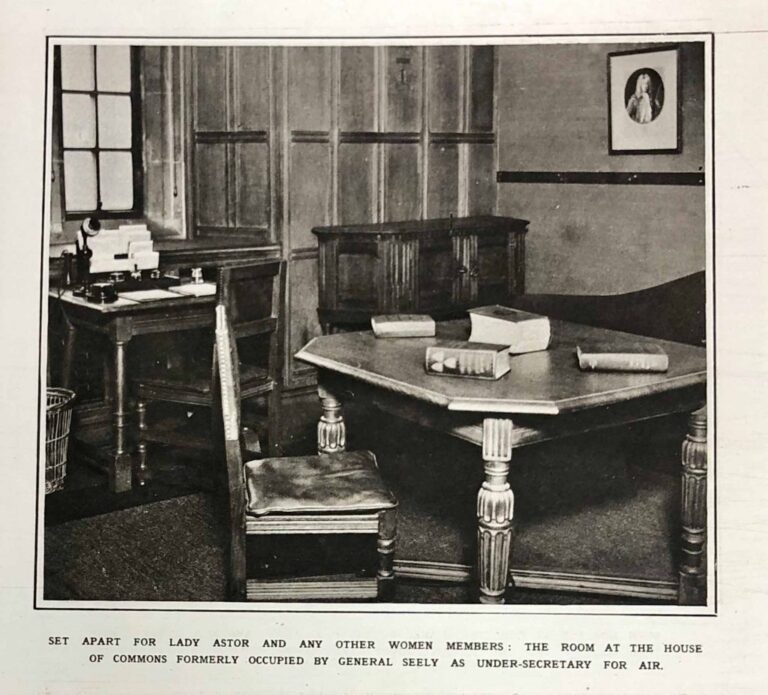
Nonetheless, the woman members’ room helped to foster a degree of solidarity between women MPs, especially as they were excluded, both directly and indirectly, from other spaces open to male colleagues such as the Strangers’ Dining Room, the smoking rooms, and the bars, all places where informal political work took place which disadvantaged women.
Women’s experiences in Parliament
In 1919, American born society hostess Nancy Astor won a Plymouth Sutton by-election for the Conservative Party, becoming the first woman MP to take her seat in the House of Commons. Her election success made headlines around the world and represented a new era for British politics. Parliament was no longer a male-only space.
However, she was not the first woman to be elected. In the 1918 General Election, seventeen women across the political spectrum stood for election. The Sinn Féin candidate for Dublin St Patrick’s, Constance Markievicz, was the only woman to win her election contest, but along with other Sinn Féin MPs, she was not prepared to take the oath of allegiance to the British crown and refused to take her seat in the House of Commons.
Astor entered Parliament for the first time on 1 December 1919. The House of Commons chamber was full with 707 MPs, who were all keen to witness the arrival of the first woman MP.
Dressed in a simple white blouse, black skirt, and jacket, paired with a tricorn hat, Astor was introduced into the chamber by her sponsors Arthur Balfour and David Lloyd George. She adopted plain clothing in the hope of avoiding scrutiny on her appearance and clothing choices, although the press continued to comment on it. In the lead up to Astor’s arrival, The Globe declared ‘When Lady Astor takes her seat in the House, the burning question for the moment is likely to be what she will do with her hat’, while the Dundee Courier subsequently described Astor’s appearance as ‘the picture of vigorous British womanhood’.
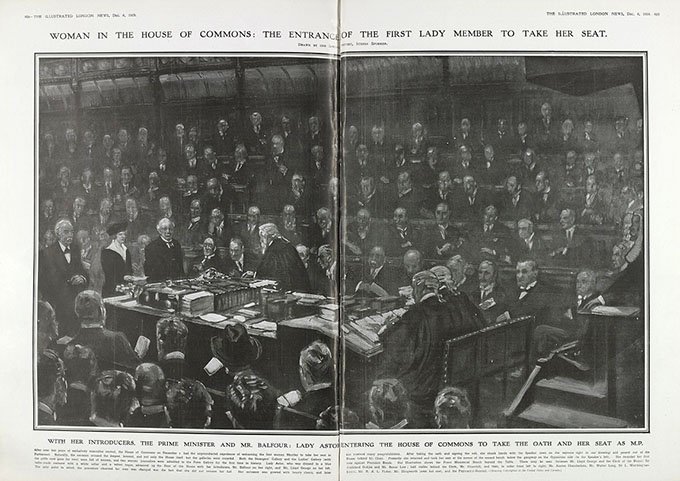
This image from the London Illustrated News emphasises how much Astor stood out in the chamber as the sole female MP. Astor later revealed ‘that although she had given the appearance of composure, on her first day she had been absolutely terrified and sat in the House ‘for five hours without moving’ for fear of drawing attention to herself.
As Rachel Reeves notes, ‘the very act of physically taking her seat was a challenge: since it was in the middle of a row, male MPs… often physically obstructed her from getting through. She received a largely hostile reaction from male MPs, with Astor famously saying that members ‘would rather have had a rattlesnake than me’ in the House of Commons. Many MPs refused to speak to Astor, including her friend Winston Churchill who said that by ignoring her, we ‘hoped to freeze her out’.
Outside of the debating chamber, Astor confined herself to the woman members’ room. As the only woman MP until the Liberal Margaret Wintringham entered in 1921, Parliament was often an isolating experience for Astor. Reflecting on this, she remarked ‘Pioneers may be picturesque figures, but they are often rather lonely ones’. Despite belonging to different parties, Astor and Wintringham became close friends and worked together on issues related to women and children. On entering Parliament, Wintringham spoke of feeling ‘rather like a new girl at school’ in her maiden speech.
As more women entered Parliament, they shared the woman members’ room. Indeed in 1927, eight women were sharing its three desks, two armchairs, two sofas and one small mirror.
Over time, women MPs began to challenge the masculine structure of Parliament. When the Labour MP Ellen Wilkinson was elected in 1924, she decided to enter the smoking room, but was stopped by a male police officer who told her that ladies did not enter such a space. To this she replied, ‘I am not a lady – I am a ‘Member of Parliament’, before opening the door’.
Wilkinson continuously drew attention to the limited accommodation for women MPs in the House of Commons. This, she told the press in 1928, was because ‘women MPs are regarded as a mere political accident’. She went on to say that ‘the authorities really ought to face up to the question of providing permanent and satisfactory accommodation’.
The passing of the Parliament (Qualification of Women) Act marks an important moment in history for women’s rights. However, rather than Parliament trying to adapt to integrate women into Parliamentary spaces, separate spaces were created for women, which had a significant impact on how female MPs would experience Parliament. Nonetheless, the challenges that women faced brought about a sense of solidarity between women MPs across the political spectrum.
This article was originally published in The National Archives.
Podcasts about first women MPs:
Articles you may also like:

Australia and the Vietnam War: Looking Back
Reading time: 10 minutes
This is an appropriate time to reflect on what we have learned from 50 years of political argument and scholarly study about the war. How has a half-century of controversy, reflection and research affected presentations of the war for general audiences, such as the 18-hour documentary series The Vietnam War by Ken Burns and Lynn Novick and the British historian Max Hastings’s book Vietnam: An epic tragedy, 1945–1975?
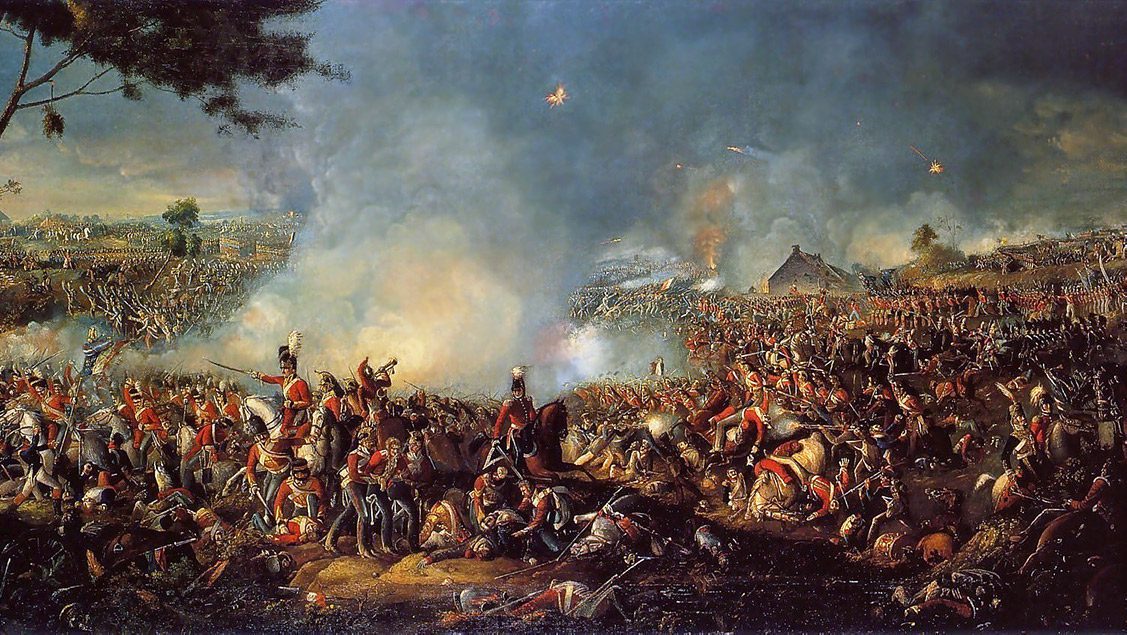
History Guild Quiz – Intermediate
History Guild Quiz – IntermediateSee how your history knowledge stacks up. Want to know more about any of the questions? Once you’ve finished the quiz click here to learn more. Have an idea for a question? Suggest it here and we’ll include it in a future quiz! The stories behind the questions 1. In what […]
This article was first published by The National Archives. It is reproduced in accordance with the Open Government Licence v3.0.

